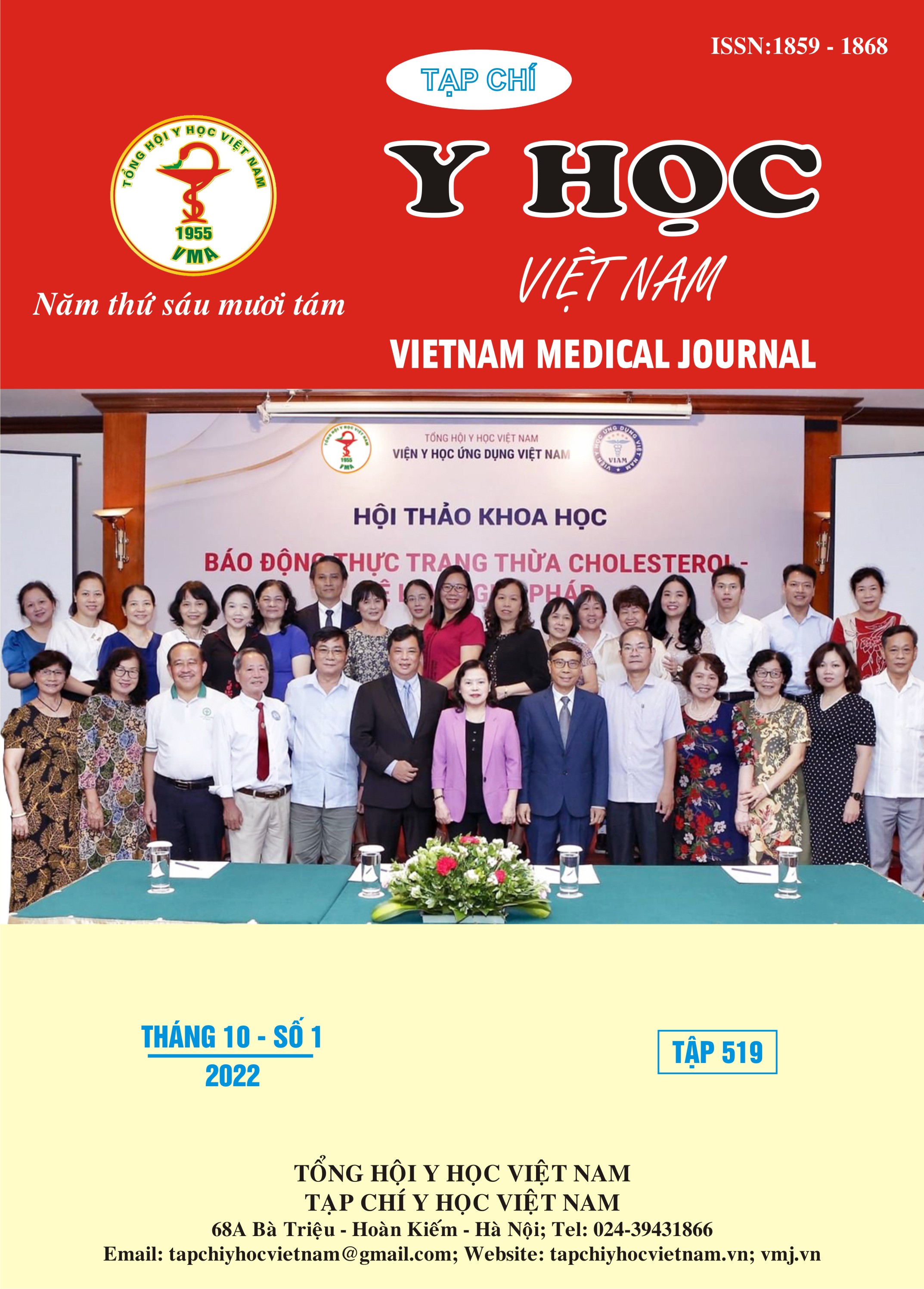TỔNG QUAN VỀ TÌNH HÌNH KHÁNG KHÁNG SINH CỦA MỘT SỐ VI KHUẨN THƯỜNG GÂY BỆNH TRÊN LÂM SÀNG TẠI VIỆT NAM TỪ 2017- 2022
Nội dung chính của bài viết
Tóm tắt
Tình trạng kháng kháng sinh đã làm cho việc lựa chọn kháng sinh theo kinh nghiệm càng khó khăn hơn, tỷ lệ thất bại càng cao. Theo nghiên cứu của Đinh Thị Thúy Hà trong điều trị nhiễm khuẩn gram âm đa kháng tại bệnh viện Đa khoa Đồng Nai thì tỉ lệ phác đồ kháng sinh ban đầu không phù hợp là 35,8% và phần lớn bệnh nhân được thay đổi phác đồ điều trị ngay sau khi có kết quả kháng sinh đồ (64,9%) do tình trạng không cải thiện hoặc bệnh có diễn biến xấu hơn[1]. Nghiên cứu thực hiện với mục tiêu: Tổng quan về tình hình kháng kháng sinh của một số vi khuẩn gây bệnh thường gặp tại Việt Nam từ 2017 – 2022. Đối tượng và phương pháp nghiên cứu: Tổng quan dữ liệu từ các bài báo trên tạp chí Y, Dược, báo cáo hội nghị khoa học, khóa luận, luận văn, luận án, bài báo tạp chí quốc tế có báo cáo tình hình kháng kháng sinh tại Việt Nam. Kết quả: Streptococcus Pneumoniae có tỷ lệ kháng cao, giá trị MIC vượt quá MIC kháng thuốc với penicillin G/V, amoxicillin, Macrolid, Sulfamid, Phenicol; Haemophilus influenzae một số kháng sinh còn có độ nhay cao như FQ, C3, Carbapenem; Klebsiella Pneumoniae ở Nghệ An và Thái Binh có tỷ lệ sinh ESBL lần lượt là 14%, 15,8%; E.coli có tỷ lệ kháng cao với nhóm Pencicilin (ampincilin, amoxicillin) nhóm Tetracyclin, các Cephalosporin (C3 và C4), kháng mức độ vừa phải với FQ, còn có độ nhay cao với Capabenem, Aminosid. Pseudomonas aeruginosa đang còn có tỷ lệ nhạy cao với Colistin và piperacillin/tazobactam. Kết luận: Qua nghiên cứu có thể thấy vi khuẩn gây bệnh thường gặp có tỷ lệ kháng cao trên lâm sàng, cần có những dữ liệu xác định giá trị MIC của kháng sinh đối với từng loại vi khuẩn nhằm điều chỉnh liều theo PK/PD để nâng cao hiệu quả điều trị trên lâm sàng.
Chi tiết bài viết
Từ khóa
Kháng kháng sinh, vi khuẩn gây bệnh thường gặp
Tài liệu tham khảo
2. Chuc, N.T. and G. Tomson, "Doi moi" and private pharmacies: a case study on dispensing and financial issues in Hanoi, Vietnam. Eur J Clin Pharmacol, 1999. 55(4): p. 325-32.
3. Ngô Thế Hoàng, Quế Lan Hương, and Nguyễn Bá Lương, Tính kháng thuốc của Klebsiella pneumoniae trong viêm phổi bệnh viện tại bệnh viện Thống Nhất Tp. Hồ Chí Minh. Tạp chí Y Học TP. Hồ Chí Minh, 2012. 16(1).
4. Ngô Xuân Thái, Đánh giá tình hình nhiễm khuẩn đường tiết niệu tại phòng khám ngoại tiết niệu Bệnh viện Chợ Rẫy. Tạp chí Y Học Thành phố Hồ Chí Minh, 2019. 23(2).
5. Nguyễn Đăng Quyệt, Đ.M.T., Bùi Quang Phúc, Trương Thị Việt Nga, Tình hình đề kháng kháng sinh của phế cầu và kết quả điều trị viêm phổi do phế cầu ở trẻ em tại Bệnh viện Nhi Trung ương. Journal of Pediatric Research and Practice, 2021. 5: p. 28-34.
6. Phong Thi Nam Nguyena, J.M.B., Stephen Bakercd, Trang Hoang Thu Nguyene, Tin Viet and T.T.H.D. Phama, Naso-pharyngeal carriage and antimicrobial susceptibility of Streptococcus pneumoniae in community-acquired pneumonia in children. Journal of University of Medicine and Pharmacy at Ho Chi Minh City, 2022. 6: p. 34-42.
7. Trần Quang Khải, N.T.D.T., Trần Đỗ Hùng, Tỷ lệ phân lập, đề kháng kháng sinh của Streptococcus Pneumoniae gây viêm phổi nặng ở trẻ em Cần Thơ. Tạp Chí Nghiên Cứu Y Học, 2021: p. 229-240.
8. Trần Thị Kiều Anh, N.V.T., Nghiên cứu tính kháng kháng sinh của vi khuẩn gây viêm phổi ở trẻ 2 tháng đến 5 tuổi tại bệnh viện sản nhi Nghệ An. Tạp Chí Y Học Việt Nam, 2021: p. 297-301.
9. Hải, T.X., et al., Nghiên cứu tính kháng kháng sinh của một số loài vi khuẩn gây bệnh phân lập được tại Bệnh viện Sản Nhi Nghệ An năm 2021. Tạp chí Y học Việt Nam, 2022. 512(1).


